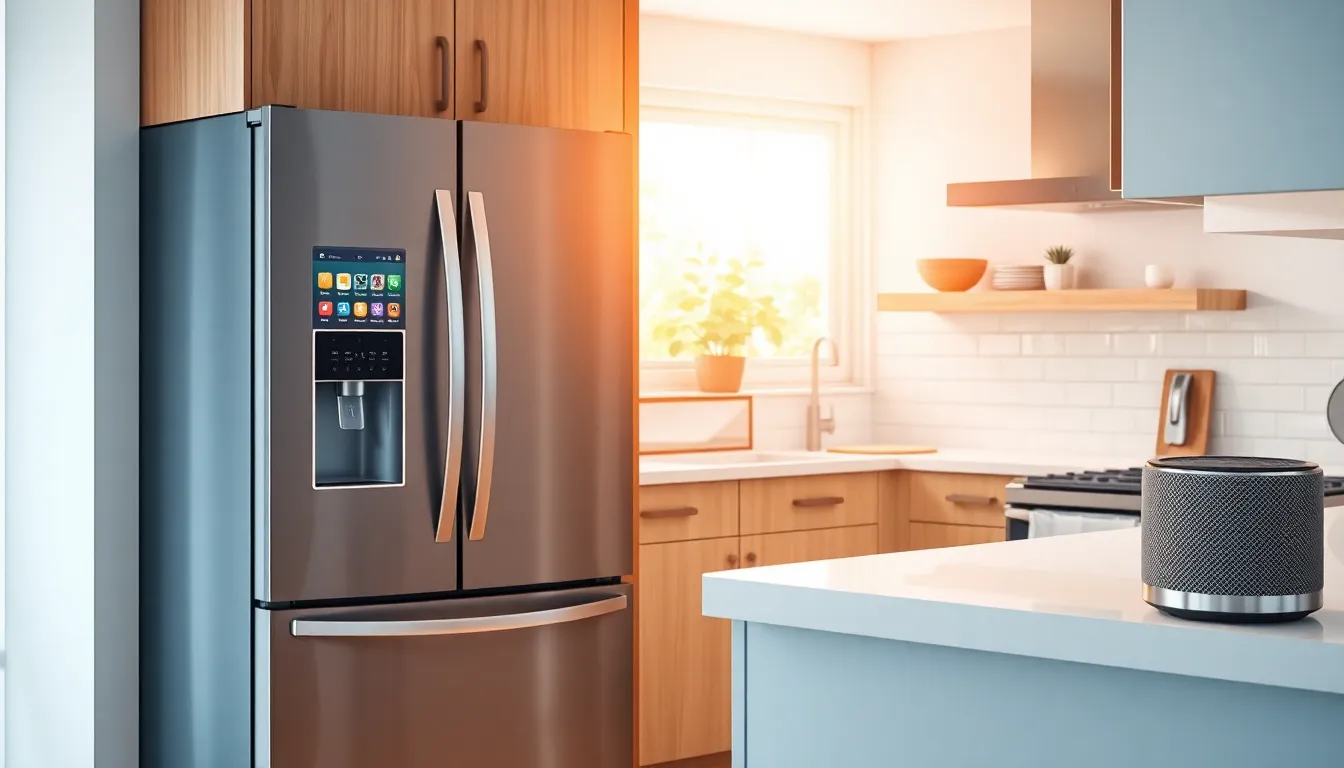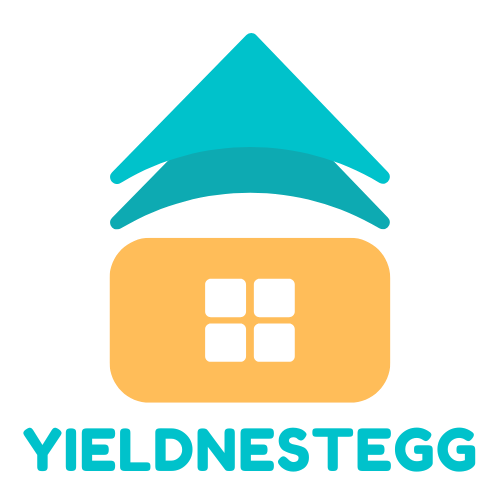Imagine waking up to the gentle hum of your coffee maker, the curtains slowly drawing back to reveal a sun-soaked morning, and your thermostat adjusting to the perfect temperature—all without lifting a finger. Welcome to the age of smart homes, where technology does the heavy lifting while homeowners sit back and enjoy the perks of modern living.
As smart home devices evolve at lightning speed, they’re not just gadgets; they’re transformative tools that enhance everyday life. From voice-activated assistants to security systems that can outsmart a cat burglar, the progress in this field is nothing short of remarkable. Join the journey as we explore how these innovations are reshaping homes, making them not just smarter but also a whole lot more fun. After all, who wouldn’t want a home that practically runs itself?
Table of Contents
ToggleOverview of Smart Home Progress
Smart home technology has experienced significant advancements over recent years. Innovations include smart thermostats, lighting systems, and security cameras that enable homeowners to control their environment remotely. Ease of use defines these devices, which often integrate with smartphones for immediate access.
Adoption rates have surged. Statista reported that by 2021, nearly 40% of US households owned at least one smart home device. Growth in this sector reflects consumer demand for convenience and enhanced security features. Voice-activated assistants, such as Amazon Alexa and Google Assistant, play a central role in this progress, allowing users to control multiple devices using simple commands.
Integration of smart appliances represents another stride forward. Refrigerators that notify users of low food supplies or ovens that can be pre-heated from a smartphone check off daily tasks effortlessly. These appliances contribute to energy efficiency by optimizing resource usage, working in harmony with home energy management systems.
Moreover, security enhancements showcase the effectiveness of smart technology. Systems equipped with motion sensors and live video feeds ensure increased safety for homeowners. Recent statistics show that homes with smart security systems experience up to 20% fewer break-ins.
Collaborations among tech companies and homebuilders are expanding smart home ecosystems. These strategic partnerships aim to create homes that incorporate cutting-edge technology from the ground up. As a result, the future of smart homes appears increasingly promising, with enhanced features and functionality resonating deeply with consumers.
Understanding these advancements emphasizes how technology continues to redefine daily living.
Key Innovations in Smart Home Technology

Smart home technology advances rapidly, introducing various innovations that enhance convenience and security. These innovations significantly improve daily living.
Home Automation Systems
Home automation systems streamline the management of multiple devices. Users can coordinate lighting, temperature, and security through a centralized interface. Many systems allow for scheduling, which means lights can automatically turn on at sunset. Advanced sensors also adjust temperatures based on occupancy, promoting energy efficiency. Homeowners benefit from increased control and comfort throughout their spaces.
Smart Appliances
Smart appliances redefine kitchen functionality and efficiency. Refrigerators with built-in cameras notify users when groceries run low. Ovens that can be pre-heated remotely save time during meal preparation. Dishwashers equipped with smart technology optimize water usage based on load size. Enhanced connectivity allows devices to share status updates, simplifying management for users and reducing energy consumption.
Voice Assistants
Voice assistants play a crucial role in smart home integration. Users can operate multiple devices hands-free with simple voice commands. Smart speakers, such as Amazon Alexa and Google Assistant, enable easy access to smart home settings. These assistants provide updates, play music, and even control entertainment systems. Their continuous improvements enhance user interaction, making smart homes more intuitive and accessible.
Benefits of Smart Home Solutions
Smart home solutions provide significant advantages, enhancing daily living experiences through technology integration.
Convenience and Efficiency
Smart home technology simplifies various everyday tasks. Voice-activated assistants enable users to control lighting, temperature, and appliances with simple commands, saving time and effort. Automation of routines provides seamless transitions; for example, programmed schedules adjust heating and lighting according to daily activities. Apps allow homeowners to monitor and control devices remotely, ensuring convenience even when away. Utilizing smart appliances, like automated coffee makers, alleviates morning rushes, making life noticeably more efficient.
Energy Management
Energy management benefits significantly from smart home solutions. Smart thermostats learn user habits, optimizing heating and cooling to reduce energy consumption and save on bills. Additionally, smart lighting systems utilize motion sensors and timers to minimize energy waste when rooms are unoccupied. Homeowners can receive real-time energy usage data, identifying opportunities for further savings. With the integration of smart plugs, devices can be turned off remotely, eliminating vampire power consumption.
Enhanced Security
Smart home solutions elevate household security. Systems equipped with smart cameras and motion detectors provide real-time alerts and video feeds to users’ smartphones, allowing them to monitor their homes from anywhere. Intrusion alerts enhance security levels, with some systems integrating with local law enforcement for immediate response. Smart locks offer keyless entry, allowing users to grant access remotely, while automated lighting can simulate presence during away periods. These features collectively contribute to a more secure environment, reducing break-in risks by up to 20%.
Challenges Facing Smart Home Adoption
Adoption of smart home technology faces several significant challenges. Privacy concerns top the list for many users, as smart devices collect vast amounts of personal data. Homeowners often fear unauthorized access to their information, particularly when it involves sensitive details like household habits and routines. Laws regarding data protection, though evolving, may not fully address user concerns. Companies need to establish trust by enhancing security measures and clearly communicating data handling practices.
Compatibility issues also emerge as a major hurdle. Many smart devices from different manufacturers struggle to work seamlessly together. Users may own products that require distinct ecosystems, leading to complicated setups. For example, a smart thermostat from one brand might not integrate smoothly with lighting systems from another. This lack of standardization complicates user experience and discourages potential buyers. Improving interoperability among devices through industry-wide standards could increase market appeal and customer satisfaction.
Future Trends in Smart Home Progress
Emerging trends continue to shape the landscape of smart homes, indicating a future rich with innovation.
AI and Machine Learning Integration
AI and machine learning play vital roles in advancing smart home technology. These systems enhance personalization through the analysis of user habits, allowing devices to anticipate needs. Homeowners experience improved energy efficiency as AI algorithms adjust heating and cooling based on occupancy patterns. With continuous learning, smart devices refine their accuracy, providing tailored experiences. Experts predict that by 2025, over 50% of smart home devices will integrate AI, making automation even more intuitive. A unified AI ecosystem could also streamline management, bringing seamless user interactions to new heights.
Sustainable Smart Home Solutions
Sustainability trends gain momentum within the smart home sector. Manufacturers focus on energy-efficient appliances that reduce water and electricity usage significantly. Smart thermostats and lighting systems can lower energy consumption by up to 30%, promoting eco-friendly living. Research indicates that 70% of consumers prioritize sustainability when selecting smart home products. Innovations like solar-powered devices further demonstrate this commitment to energy efficiency. As awareness of environmental impact increases, homeowners will likely adopt sustainable solutions that lower utility costs and maintain comfort.
Smart home technology is revolutionizing the way people live by enhancing convenience security and energy efficiency. As adoption rates continue to rise more households are embracing the benefits of automation and integration. The advancements in smart devices not only simplify daily tasks but also promote a safer living environment.
While challenges such as privacy concerns and compatibility issues remain the future looks bright for smart home innovations. With the integration of AI and a growing emphasis on sustainability consumers can expect even more intuitive and eco-friendly solutions. As technology evolves homeowners will find themselves enjoying a lifestyle that balances comfort with efficiency.



